Showing Spotlights 129 - 136 of 547 in category All (newest first):
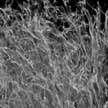 Investigating the potential of DNA to form self-assembled injectable hydrogels via physical crosslinking with silicate nanodisks, researchers have utilized DNA as a high molecular weight polymeric chain in order to form hydrogel networks for tissue regeneration and drug delivery applications. They have designed shear thinning hydrogels, which can be passed through a 22-gauge syringe by taking advantage of the native chemical structure of DNA and its specific base pairing interactions.
Investigating the potential of DNA to form self-assembled injectable hydrogels via physical crosslinking with silicate nanodisks, researchers have utilized DNA as a high molecular weight polymeric chain in order to form hydrogel networks for tissue regeneration and drug delivery applications. They have designed shear thinning hydrogels, which can be passed through a 22-gauge syringe by taking advantage of the native chemical structure of DNA and its specific base pairing interactions.
Sep 24th, 2018
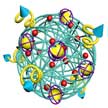 Development of an effective approach for delivering a new drug is as important as inventing a new drug. Even if a developed new drug has excellent pharmacokinetic and therapeutic properties, it shows its potential activity in the body effectively only when it is exactly targeted to specific molecules. Various nanotechnological approaches for effective drug delivery have been developed and some of them have already been successfully commercialized. Most prominent nano drug delivery systems that are in market place are oncology related and based on liposomal, solid nanoparticle based, protein polymer conjugates and polymer-drug conjugate based delivery platforms.
Development of an effective approach for delivering a new drug is as important as inventing a new drug. Even if a developed new drug has excellent pharmacokinetic and therapeutic properties, it shows its potential activity in the body effectively only when it is exactly targeted to specific molecules. Various nanotechnological approaches for effective drug delivery have been developed and some of them have already been successfully commercialized. Most prominent nano drug delivery systems that are in market place are oncology related and based on liposomal, solid nanoparticle based, protein polymer conjugates and polymer-drug conjugate based delivery platforms.
Sep 18th, 2018
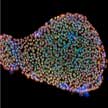 Researchers have developed a way to achieve an ultra-high bioelectric signal from human embryonic stem cells using direct current-voltage measurements facilitated by few-layered 2D molybdenum disulfide sheets. This method, which produces cell signals 2 orders of magnitude higher than previous electrical-based detection methods, paves the way for the development of a broadly applicable, fast, and damage-free stem cell detection method capable of identifying pluripotency with virtually any complementary metal-oxide-semiconductor circuits.
Researchers have developed a way to achieve an ultra-high bioelectric signal from human embryonic stem cells using direct current-voltage measurements facilitated by few-layered 2D molybdenum disulfide sheets. This method, which produces cell signals 2 orders of magnitude higher than previous electrical-based detection methods, paves the way for the development of a broadly applicable, fast, and damage-free stem cell detection method capable of identifying pluripotency with virtually any complementary metal-oxide-semiconductor circuits.
Sep 17th, 2018
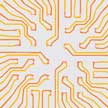 Graphene bioelectronics has become a ground-breaking field that offers exciting opportunities for developing new kinds of sensors capable of establishing outstanding interfaces with soft tissue. Graphene-based transistors, as well as electrode arrays, have emerged as a special group of biosensors with their own peculiarities, advantages and drawbacks. A new review present sa comprehensive overview of the use of graphene for bioelectronics applications; specifically the focus is on interfacing graphene-based devices with electrogenic cells, such as cardiac and neuronal cells.
Graphene bioelectronics has become a ground-breaking field that offers exciting opportunities for developing new kinds of sensors capable of establishing outstanding interfaces with soft tissue. Graphene-based transistors, as well as electrode arrays, have emerged as a special group of biosensors with their own peculiarities, advantages and drawbacks. A new review present sa comprehensive overview of the use of graphene for bioelectronics applications; specifically the focus is on interfacing graphene-based devices with electrogenic cells, such as cardiac and neuronal cells.
Sep 3rd, 2018
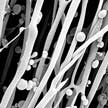 By employing 3D scaffolds with both aligned nanofibers and aligned interconnected macrochannels, researchers have taken a nanotechnology-based tissue engineering approach to accelerate the regeneration and repair of damaged tissues at the wound site by directing cells and tissues to grow towards the target site. Their hope is that this leads to the development of affordable and functional biodegradable wound dressings for accelerated healing of chronic skin wounds by promoting regeneration of local tissues.
By employing 3D scaffolds with both aligned nanofibers and aligned interconnected macrochannels, researchers have taken a nanotechnology-based tissue engineering approach to accelerate the regeneration and repair of damaged tissues at the wound site by directing cells and tissues to grow towards the target site. Their hope is that this leads to the development of affordable and functional biodegradable wound dressings for accelerated healing of chronic skin wounds by promoting regeneration of local tissues.
Aug 16th, 2018
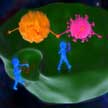 Scientists propose a novel tumor treatment strategy for simultaneous ablating tumor and inhibiting infection by using specially designed biodegradable metal-organic frameworks (MOFs). The strategy of simultaneous eradicating tumor tissue and inhibiting infection can inspire the researchers with novel progressing technologies for tumor therapy. This novel strategy opens the door for developing the nanomaterials that are sensitive to microwave irradiation and inhibiting infection to achieve noninvasive combined treatment in clinical practice.
Scientists propose a novel tumor treatment strategy for simultaneous ablating tumor and inhibiting infection by using specially designed biodegradable metal-organic frameworks (MOFs). The strategy of simultaneous eradicating tumor tissue and inhibiting infection can inspire the researchers with novel progressing technologies for tumor therapy. This novel strategy opens the door for developing the nanomaterials that are sensitive to microwave irradiation and inhibiting infection to achieve noninvasive combined treatment in clinical practice.
Jul 23rd, 2018
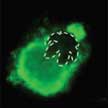 Research on micro- and nanomachines has advanced from the observation and understanding of basic motion behavior to the constantly improving capabilities of performing complex tasks. This ranges from interaction with bacteria to propulsion based on cells and in vivo medical applications. A review looks at the applications of micro- and nanomachines in living biosystems from two aspects: the interaction of micro/nanomachines with other microscopic organisms or biological units, and the efforts toward application of micro/nanomachines in human body.
Research on micro- and nanomachines has advanced from the observation and understanding of basic motion behavior to the constantly improving capabilities of performing complex tasks. This ranges from interaction with bacteria to propulsion based on cells and in vivo medical applications. A review looks at the applications of micro- and nanomachines in living biosystems from two aspects: the interaction of micro/nanomachines with other microscopic organisms or biological units, and the efforts toward application of micro/nanomachines in human body.
Jul 5th, 2018
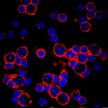 Programmable nucleic acid nanoparticle (NANP) technology is a relatively new field that has already given rise to a host of self-assembling nucleic acid nanoparticles that are increasingly viewed as promising biological materials for medical applications. Programmable self-assembling NANPs are amenable to chemical modifications, control over functionalization, and consistent batch-to-batch formulation. Researchers present the first detailed and systematic study that involved 25 most representative NANPs, originally designed by different groups, screened for the induction of 29 different cytokines.
Programmable nucleic acid nanoparticle (NANP) technology is a relatively new field that has already given rise to a host of self-assembling nucleic acid nanoparticles that are increasingly viewed as promising biological materials for medical applications. Programmable self-assembling NANPs are amenable to chemical modifications, control over functionalization, and consistent batch-to-batch formulation. Researchers present the first detailed and systematic study that involved 25 most representative NANPs, originally designed by different groups, screened for the induction of 29 different cytokines.
Jun 25th, 2018
 Investigating the potential of DNA to form self-assembled injectable hydrogels via physical crosslinking with silicate nanodisks, researchers have utilized DNA as a high molecular weight polymeric chain in order to form hydrogel networks for tissue regeneration and drug delivery applications. They have designed shear thinning hydrogels, which can be passed through a 22-gauge syringe by taking advantage of the native chemical structure of DNA and its specific base pairing interactions.
Investigating the potential of DNA to form self-assembled injectable hydrogels via physical crosslinking with silicate nanodisks, researchers have utilized DNA as a high molecular weight polymeric chain in order to form hydrogel networks for tissue regeneration and drug delivery applications. They have designed shear thinning hydrogels, which can be passed through a 22-gauge syringe by taking advantage of the native chemical structure of DNA and its specific base pairing interactions. 
 Subscribe to our Nanotechnology Spotlight feed
Subscribe to our Nanotechnology Spotlight feed





